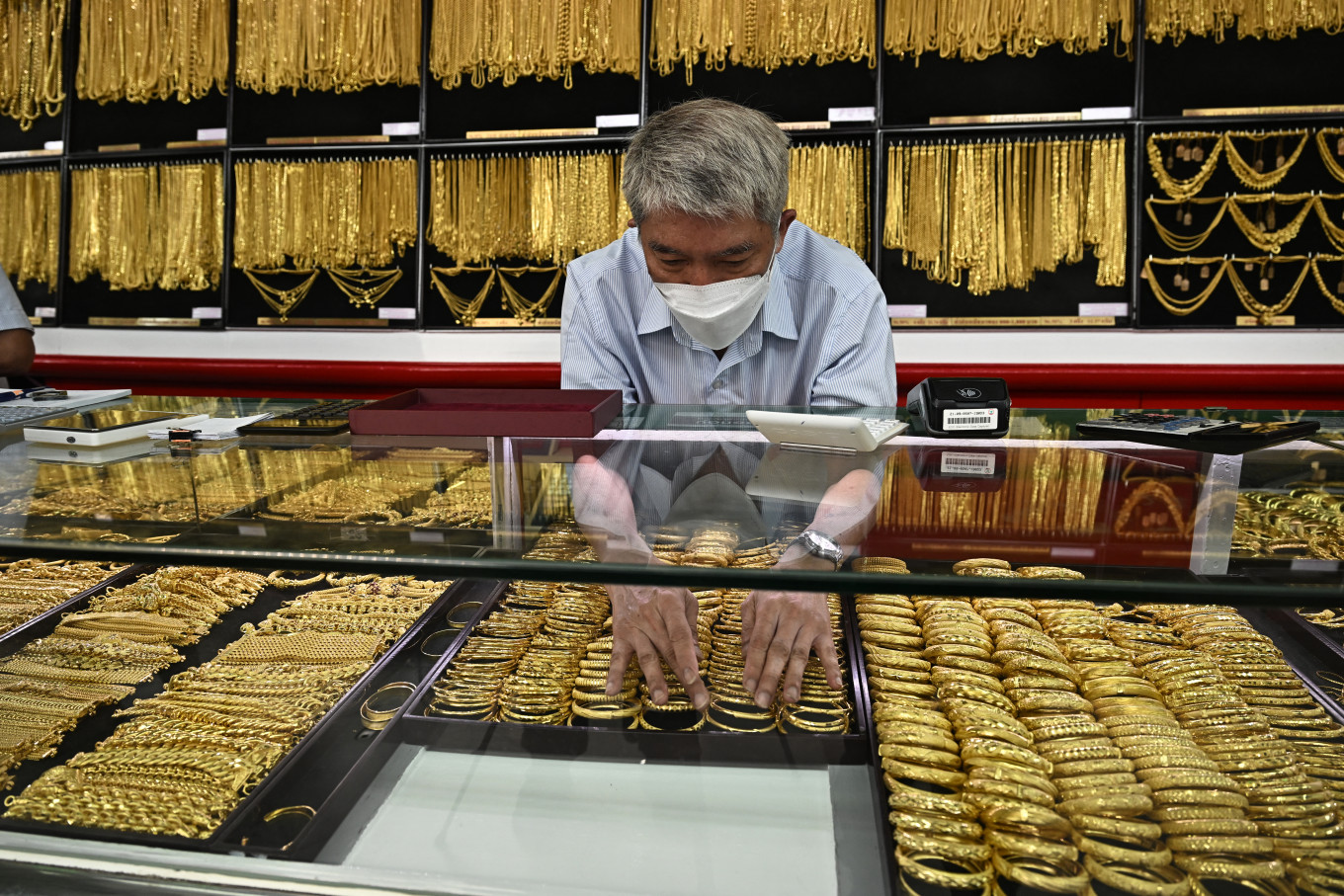Popular Reads
Top Results
Can't find what you're looking for?
View all search resultsPopular Reads
Top Results
Can't find what you're looking for?
View all search resultsAmerican shakedown, global system shakeup
In trying to reset the global monetary system by using tariffs, the Trump team has inadvertently pushed de-dollarization and the system back toward a gold stardard.
Change text size
Gift Premium Articles
to Anyone
C
haotic as it seems, United States President Donald Trump’s tariff war and subsequent walk-backs are a deadly, serious attempt by his team to address what they perceive as the core issues of the dollar-dominated global monetary system.
The key Trump advisers, trade guru Peter Navarro, Treasury Secretary Scott Bessent and Council of Economic Advisers Chairman Stephen Miran, share visceral anger and angst in their speeches or writings.
America is victimized by the current system because she has to run large, current fiscal and trade deficits from the strengthening dollar, created by allies refusing to pay for US military protection while trading rivals devalue or cheat to gain market share, weakening America’s once mighty manufacturing prowess.
Essentially, the Trump administration wants to reset the whole dollar-dominated monetary and trading order.
Miran’s November 2024 essay “A User’s Guide to Restructuring the Global Trading System”, which some have dubbed the “Mar-a-Lago Accord”, is a global shakedown from Pax Americana to Tax Americana: Users and holders of US dollars, especially allies, will have to pay for protection and use of the dollar infrastructure in either user fees, tax or swaps into securities of longer duration. The key weapons are higher tariffs, sanctions or income or wealth taxes, at the extreme swaps for longer-term securities, freezing or possible seizure of their dollar holdings.
This is back to a brutal history lesson in imperial finance. The Roman empire funded itself basically by confiscating enemy or vassal assets or extinguished debt through seizure, military conquests or shakedowns.
The British empire civilized this model to a rule of law “borrowing”, offering perpetual Consol bonds to colonies and anyone seeking liquidity and store of value haven in London, and then reinvesting proceeds in the colonies through higher returns from shares in the British East India Company monopoly or private mining, plantation, trading (arms dealers) funded by British banks.
In 1717, Isaac Newton as Master of the Mint adopted the sterling gold special standard, which fixed pound sterling at a gold-silver exchange price that eventually evolved into a gold standard.
The US dollar was initially based on the silver standard, but American gold became plentiful after the 1848 California gold rush. As the two world wars exhausted Europe and bankrupted the British empire, gold and capital fled to the US, establishing New York as a financial haven and the dollar supplanted sterling.
By 1945, the US emerged as the undisputed winner and dominant power, with the dollar linked to gold at $35 per ounce.
Gold has long been accepted as a good means of payment (coinage) and store of value, but its main defect as a reserve currency standard is limited supply, which constrains the ability of governments to print money or borrow money. Gold creates a hard budget constraint independent of politics.
When the US began to lose gold reserves in the 1960s due to excessive spending on the Vietnam War, then-president Richard Nixon abandoned the dollar peg in 1971, and the era of floating exchange rates with dollar as top reserve standard began.
The new system gave the US the ability to relax her fiscal discipline, since the rest of the world wanted to hold dollars as reserve currency. This created an “exorbitant privilege”, identified by Belgian-American economist Robert Triffin as a dilemma in which the more the world demanded US dollars, the greater its fiscal and trade deficits and therefore, unsustainable debt.
With flexible exchange rates and free flow of capital came the post-1980s era of fiscal and debt profligacy that encouraged excessive consumption funded by debt, huge financial speculation rather than productive investments, periodic financial crises bailed out by central banks’ lowering of interest rates that created asset bubbles and subsequent crashes.
Various initiatives to reform the international monetary system, such as the Palais Royale Initiative centered around trying to replace the nationally issued reserve currency (US dollar) with a multilaterally issued currency, the Special Drawing Rights of the International Monetary Fund (IMF), which is a basket of the key reserve currencies. This proposal would not fly because the US did not want to lose the dollar’s special status and the leading nations could not agree on how to cede national currency issuance power to the IMF.
What these reformers missed, including myself as a former central banker, was that the natural substitute for a nonnational reserve currency is not another artificially designed multilateral standard but the historical candidate: gold.
Gold is the only money that cannot be printed by governments or mined through cyber machines. If we cannot trust politicians, national governments or central bankers to manage our money, then a transparent gold market will be able to price such fiat currencies that will float against each other and against gold.
As the US began to run up larger and larger fiscal deficits (currently 7 percent of gross domestic product/GDP), trade deficit (3.1 percent of GDP) and net foreign liabilities to foreigners of $26 trillion by end 2024, dollar holders were until recently rewarded by outperformance in US financial asset returns.
The US stock market is now at historical highs and the bond market wobbled when the equity market corrected. This is exactly what happens in emerging markets. Global investors are now into “Sell or Hedge America”.
The shift out of dollars has already happened, as central banks have reduced the share of dollars in their foreign exchange reserves from 71.5 percent in 2001 to 57.8 percent in 2024.
Central banks have been adding 1,000 tonnes of gold to their reserves for three years running to hold 36,195 tonnes as of January 2025, comprising 19.8 percent of total reserves at current prices, of which European central banks hold 64.1 percent of their reserves in gold.
The spectacular rise in gold prices suggests a fundamental de-dollarization, not into other fiat currencies, but into gold. In other words, Trump’s financial engineers have tried to use a single weapon – tariffs – to reset the system, inadvertently pushing the system back toward a gold standard.
Central banks cannot fight higher gold prices by selling precious reserves or higher interest rates; the last thing heavily indebted governments need.
Between financial engineers or gold, in gold I trust.
---
The writer is a distinguished fellow at the Asia Global Institute and chief adviser to the China Banking Regulatory Commission. The views expressed are personal.











